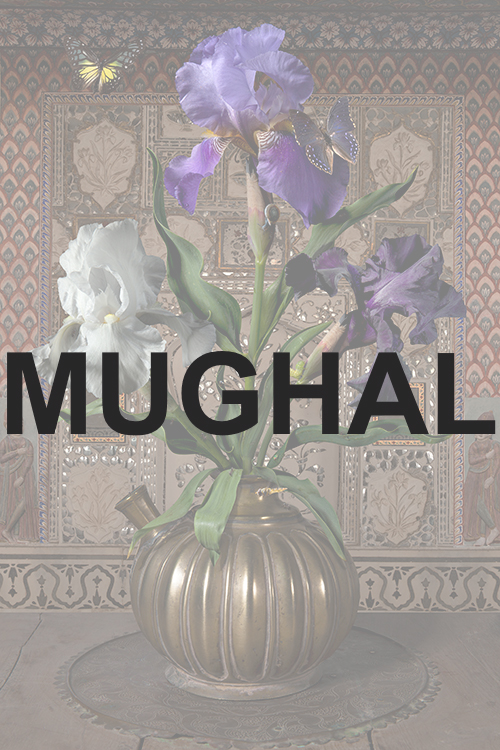INDIA
Mughal Still Lifes and Mughal Botanical
In my conversations with Bas, the question of floral representations in art began to assume wider frames of reference. Out of these discussions was born a desire to engage with the existing history of aesthetic cross-pollination between the East and the West, to build upon it, and to re-examine Bas’ Dutch flower-painting heritage and his signature style in an Indian context. This was to eventually lead to his ‘Indian’ body of work, the Mughal Still Lifes and Mughal Botanicals series, which would form part of Bas’ first-ever exhibition in India, organised by Tasveer Arts in Bangalore.
The Mughal fascination with nature deeply influenced their architecture, and flora was central to the conceptualisation and planning of all Mughal architectural spaces. Apart from its role as an essential component, flora was also used for design motifs and ornamentation in Mughal architecture—both in stylised and natural forms. One of the most profusely ornamented Mughal buildings is the tomb of Itimad-ud-Daulah in Agra, built by Emperor Jahangir’s wife Nur Jahan for her father.
My exploration of these themes and histories with Bas eventually led to conversations on how these images could be translated into the contemporary medium of photography and refigured into his existing body of work. What would Mughal still lifes in the vein of the Dutch have looked like? This is the question I asked of Bas. His ‘Indian’ photographs are an honest attempt to answer the same question, bringing historical inquiry and Mughal sensibilities to modern photography.
Abhishek Poddar
Founder of Museum of Art and Photography, India

